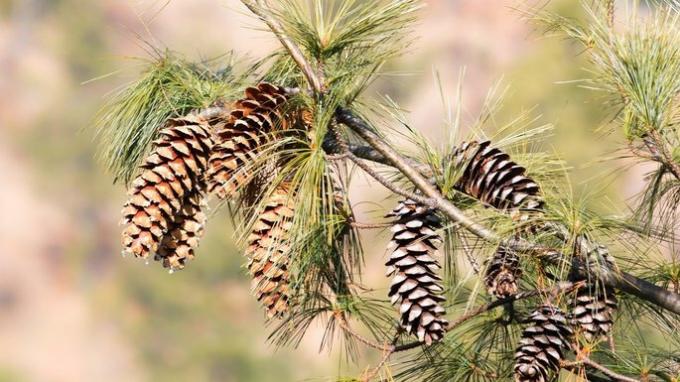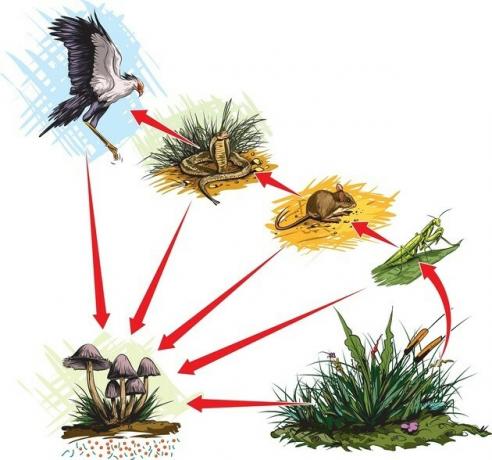Gymnosperms, meaning “naked seed”, are plants that do not have fruits surrounding the seeds. Angiosperms (“seeds in the bag”), on the other hand, produce flowers and fruits and their seeds remain inside.
Angiosperms represent most of the extant species of the Plantae kingdom, while gymnosperms have only about 750 species. Within the evolutionary process of plants, angiosperms present a greater degree of specialization and evolution.
| gymnosperms | angiosperms | |
|---|---|---|
| Etymology | From Greek: gymno “naked” and sperm “seeds”. | From Greek: angelos "handbags" It is sperm “seeds”. |
| Definition | Plants without fruit production in which the seeds are completely exposed (naked). | Plants whose seeds are completely surrounded by fruits (as in "pockets"). |
| Structure | Roots; |
Roots; |
| reproduction | Sexual with wind pollination. | Sexualized with the aid of pollinating agents. |
| Examples | Pine trees; |
Fruit (orange, apple, watermelon, etc); |
What are gymnosperms?
Gymnosperms (gymno “naked” and sperm "seeds"), "naked seeds", represent a group of plants, generally coniferous trees. They are commonly found in temperate climate forests.

Examples of gymnosperms:
- conifers
- Gingko
- cycads
- gnetophytes
How does the life cycle and reproduction of gymnosperms occur?
Gymnosperms are born from seeds. In the adult stage, they produce male and female strobili, in general, on the same plant.
When the strobili mature, the male opens and releases pollen, and the female produces eggs. The action of the wind launches the pollen, which, when entering the female strobilus, fertilizes the ovule.
From there, the ovule closes around the embryo, forming a seed that protects it and allows it to give rise to a new plant.
What are angiosperms?
Angiosperms (angelos "handbags" It is sperm “seeds”) are vascular plants, like gymnosperms, but which produce flowers and their seeds are enclosed in a fruit.
In angiosperms, the variety of colors and odors of the flowers fulfill the function of attracting pollinating animals. This change in relation to gymnosperms is considered a favorable adaptation within the evolutionary process of plants.
Flowers provide territorial expansion because they are carried by pollinating animals, fertilization can occur far from the original plant.
The fruits, in turn, when consumed, can have their seeds dispersed kilometers away, depending on the animal.

Angiosperms are the most common division among plants, representing about 90% of all existing species. All plants that have flowers and fruits.
Examples of angiosperms:
- Fruit trees
- flowering plants
How does the life cycle and reproduction of angiosperms occur?
In angiosperms, the reproductive organ can be identified by the flowers, they fulfill the function of protecting their reproductive system and attracting pollinating agents.
Flowers have female (gynoecium or pistil) and male (androecium) reproductive organs. Flowers have an area called the stigma, which has a sticky surface for pollen to attach.
The pollen produced in the androecium is received by the stigma and carried to the ovule of the flower. From then on, the flower withers and loses its petals, while the fertilized ovule forms the seed.
Inside this seed the embryo develops, while outside the fruit develops.
See also the difference between:
- Monocots and dicots



